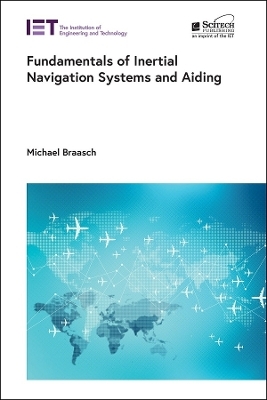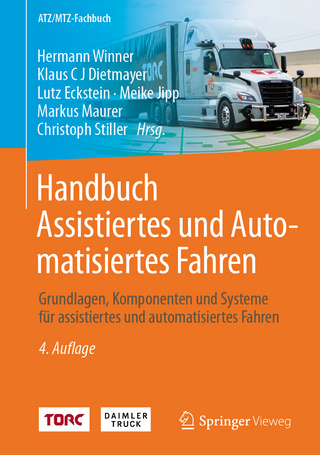
Fundamentals of Inertial Navigation Systems and Aiding
Institution of Engineering and Technology (Verlag)
978-1-83953-412-6 (ISBN)
The aim of this book is to provide an advanced introduction to inertial data processing (determination of attitude, velocity and position) along with design architectures and algorithms used to aid the inertial navigation system (INS). The emphasis is on the high-end sensors and systems used in aerospace applications (known as 'navigation grade' or 'nav grade').
The subject of inertial navigation systems and how to aid them (reduce their inherent error drift) is complex and multi-disciplinary. Mathematics and physics along with electrical, mechanical and software engineering all are involved. This book has been written to serve as an introduction for students and those new to the field. Specialized topics such as rotation matrices, quaternions and relevant stochastic processes are covered in the book. The reader is expected to have a basic understanding of vectors, matrices and matrix multiplication as well as freshman-level differential and integral calculus.
The basics of inertial position/velocity/attitude updating are first presented with respect to a conceptually simple inertially-fixed reference frame before the impact of the spheroidal rotating earth is covered. Similarly, the key concepts of the Kalman filter are first presented in the context of a scalar filter. Important aspects of the prediction error covariance and Kalman gain equations are thus covered in an intuitive sense before the full matrix formulations are described. By the end of the book, a thorough treatment of modern aided-INS architectures is provided.
Michael Braasch holds the Thomas Professorship in the Ohio University School of Electrical Engineering and Computer Science and is a principal investigator with the Ohio University Avionics Engineering Center, USA. He has been performing navigation system research for over 35 years and has taught inertial navigation on-site for numerous manufacturers of navigation-grade inertial systems. He is an instrument-rated commercial pilot and is a fellow of IEEE and the US Institute of Navigation.
Chapter 1: Introduction and overview of inertial navigation systems
Chapter 2: Reference frames and the mathematics of rotations
Chapter 3: Inertial processing in a fixed reference frame
Chapter 4: The impact of pseudo-forces in the velocity update
Chapter 5: Earth rate, transport rate, gravity, and the velocity update
Chapter 6: Spatial rate, navigation frame rotation, and position update
Chapter 7: The wander azimuth mechanization
Chapter 8: Navigation-grade inertial sensors
Chapter 9: Inertial error analysis
Chapter 10: Inertial error simulation
Chapter 11: Inertial initialization - Part A
Chapter 12: Introduction to integration and estimation theory
Chapter 13: Estimation theory and introduction to the Kalman filter
Chapter 14: The multivariate Kalman filter
Chapter 15: Radionavigation Kalman filtering: case studies in two dimensions
Chapter 16: GPS-only Kalman filtering
Chapter 17: Introduction to inertial aiding
Chapter 18: Inertial aiding in two dimensions
Chapter 19: Inertial error modeling
Chapter 20: GNSS-aided INS: loose coupling
Chapter 21: GNSS-aided INS: tight coupling
Chapter 22: Aided INS: observability and feedback
Chapter 23: Baro-inertial vertical channel
Chapter 24: Inertial initialization - Part B
Chapter 25: Conclusion: inertial+
Appendix A: Two important stochastic processes
Appendix B: One-at-a-time measurement processing
| Erscheinungsdatum | 05.10.2022 |
|---|---|
| Reihe/Serie | Radar, Sonar and Navigation |
| Verlagsort | Stevenage |
| Sprache | englisch |
| Maße | 156 x 234 mm |
| Themenwelt | Technik ► Fahrzeugbau / Schiffbau |
| Technik ► Luft- / Raumfahrttechnik | |
| Technik ► Nachrichtentechnik | |
| ISBN-10 | 1-83953-412-5 / 1839534125 |
| ISBN-13 | 978-1-83953-412-6 / 9781839534126 |
| Zustand | Neuware |
| Haben Sie eine Frage zum Produkt? |
aus dem Bereich


